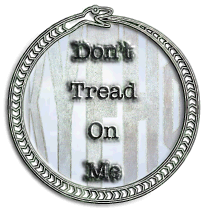|
|
entry index
Does the Federal Reserve make the currency unstable?One columnist says yes and trots out the
evidence
Alvaro Vargas Llosa examines just what the Federal Reserve has
done.
While the creation of the Federal Reserve was essentially a response to a series of bank runs, those crises were mild compared to the ones that were to follow. In 1913, the United States was under the gold standard. Although the government issued currency, the fact that currency was tied to gold meant the authorities could not manipulate the money supply easily. The Fed's initial mission was to guarantee the convertibility of deposits into currency on demand. A few decades later, the United States abandoned the gold standard and the Federal Reserve became the country's most powerful economic institution, exercising its monopoly in issuing currency based on the discretionary power of its board of governors. All in all, financial instability has been far greater since the creation of the Federal Reserve. What did the Great Depression teach us? Essentially that even with the best of intentions, it is impossible for the authorities to manage the supply of money in accordance with the exact needs of the economy. A country's economy is the sum of millions of people making decisions that no single individual is in a position to anticipate. As economist Murray Rothbard showed in his book America's Great Depression, in the 1920s the Federal Reserve pumped up the money supply, expanding credit by more than 60 percent. Because the economy was very productive, this monetary expansion did not show up in the regular inflation figures. But, as is always the case with inflation, many resources went to the wrong kind of investments--until the crisis hit. The late Milton Friedman showed how the Fed made things worse by not providing the system with enough liquidity once the Depression was obvious. The current housing market and debt market crises are in good part the children of the Federal Reserve. By cutting rates 13 times between 2001 and 2003, and then keeping them very low for years, monetary policy contributed to the housing bubble. That is not to say other factors--including financial instruments that made it difficult to see that the underlying foundation was not as solid as it seemed--did not play a part too. But, once again, the Fed has turned out to be a factor of financial instability. Congress shares it's responsibility in the collapse of the subprime market, and it looks like Congress and the Bush Administration are ready to make the mess worse. But the important thing here is to realize that by moving away from a currency linked to a measurable commodity, the Fed has made the economy that much more unstable. There is no reason why our currency can't be tied to a standard, or even multiple standards. Such currencies adjust themselves without government interference. Oh, and the first part of the article touches on the Liberty Dollar disaster. There is another brief write up on that here, and an AP piece here. I haven't covered the Liberty Dollar story before because I am not familiar with NORFED and unbiased sources have been impossible to find. 
Posted: Mon - December
3, 2007 at 12:08 PM
|
 Pagan Vigil
Pagan philosopher, libertarian, and part-time trouble maker, NeoWayland watches for threats to individual freedom or personal responsiblity. There's more to life than just black and white, using only extremes just increases the problems. My Thinking Blogger Nominees
Recent
Comments Search
Categories
Guest
Articles Interested in Pagan•Vigil hosting your articles? I'm always looking for tantalizing content that makes people think. Look here for details. E Pleb Neesta AdSense
Pagan Vigil assumes no responsibility for the advertisement content provided by Google, which is neither selected nor endorsed by NeoWayland.
NeoLinks
The News Right Now Radio Free Europe/Radio Liberty
Reason Magazine - Hit & Run Sunni Maravillosa and the Conspirators
Hammer of Truth Life, Liberty and the Pursuit of... Lady Liberty's Constitution Clearing House Law Enforcement Against Prohibition
no authority Center for a Stateless Society
Tammy Bruce.com Latino Issues: A Conservative Blog
The Nation
RealClimate
Papers, Please!
Letter from Hardscrabble Creek
You Are Not Alone A Big Idea from Eject! Eject! Eject! Fully Informed Jury Association World's Smallest Political Quiz Animated Introduction to the Philosophy of Liberty Institute for Liberty and Democracy
World of Ends 60 Second Refutation of Socialism, While Sitting at the Beach from Coyote Blog
World Religions - Religious Forums Ontario Consultants on Religious Tolerance
Who links to me? NeoBlogs
Books
Listmania - Liberty Basics
Legal
All Guest Articles are © copyright by their respective authors for the date given and subject to the specific restrictions and permissions as stated in that article entry. Guest Article restrictions and permissions are specific to each article and may not be applied to another Guest Article.
Views and opinions expressed in Guest Articles do not necessarily reflect those of NeoWayland. Content from other sources is quoted under the fair use laws of the United States with clear reference to the source material. Unless otherwise noted, all other content at :
www.paganvigil.com Additional Redirect/Frame pages may be found at these web addresses:
members.aol.com/ If your web browser does not show one of these addresses, then this page being used without permission of the author. The views expressed by NeoWayland are his own and do not represent any other enity. NeoWayland freely accepts individual and sole responsibility for his words and actions. XML/RSS Feeds
Statistics
|